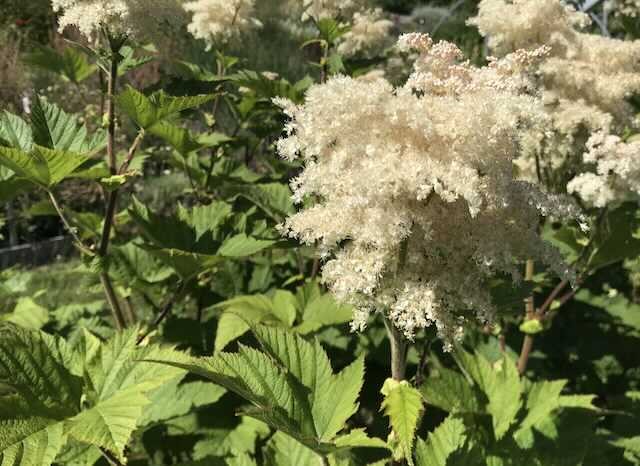
Veronicastrum virginicum
A handsome plant with attractive palmate foliage on straight stems, topped with 30 cm spikes of pale pink Veronica flowers. Best in a moist fertile spot.


Lush leafy perennial for fertile clay soils, larger and more bushy in habit than Filipendula rubra with white flowers. Plant with gunnera, Lysimachia cletheroides and Iris siberica around ponds and water features.
Lush leafy perennial for fertile clay soils, larger and more bushy in habit than Filipendula rubra with white flowers. Plant with gunnera, Lysimachia cletheroides and Iris siberica around ponds and water features.
Data sheet
A handsome plant with attractive palmate foliage on straight stems, topped with 30 cm spikes of pale pink Veronica flowers. Best in a moist fertile spot.
A clumping Campanula persicifolia with full pure white double flowers. Lovely in between roses with Geranium 'Rozanne'. Easy to manage and non-invasive.
Hand pollinated seedlings from our best double purple plants. Strain includes 'Dido' and 'Betty Ranicar'.
A nice variation of Campanula latiloba with lilac flowers and upright flower spikes, showy but can be very spreading.
Soft lemon yellow columbine, long spurs. Spring flowering and easy to grow like other varieties.
Hand pollinated seedlings from our best dark flowered plants from imported stock.
White lace cap variety, flatter flowers with lilac centre buds; stable colour and lovely.
Temperate plant for dry shade with attractive silvery felted leaves, and ground covering habit. Best in well drained soil near trees, also a fine container plant.
A recent release from our trial beds, begins as brighter musk pink then fades to soft pink then eventually cream, subtle and lovely and multicoloured tones as the flowers age. Easily cultivated like other yarrows in full sun.
One of the best Epimedium with pink flowers and decorative red tinged foliage. The new growth is particularly attractive, and the flowers are a pleasant variation from the usual yellows.
Otherwise known as Greek oregano; a long flowering border perennial and a good crossover plant between ornamental and culinary usage. White flowers in summer.
One our favourite new grasses, waist high flowers with rich green foliage, creating good mounding fill and texture within summer perennial plantings. Grows best on heavier fertile soils, and responds well to moisture in summer if available, but not overly demanding.
A good multiplier with a understated greenish bronze colour, nice and subtle.
Native to Mexico where it is now extinct in the wild. Otherwise known as chocolate cosmos, the flowers have a scent like chocolate. Best in fertile, well drained soil in a perennial border.
A wonderful variety with large white flowers like Romneya coulteri, unfortunately difficult to propagate so only a few.
Pink 'Pacific Giant' strain. Requires good soil and drainage to flourish. Delphiniums are best situated in an easterly aspect with morning sun only, protected from hot afternoon sun and drying wind.

Lush leafy perennial for fertile clay soils, larger and more bushy in habit than Filipendula rubra with white flowers. Plant with gunnera, Lysimachia cletheroides and Iris siberica around ponds and water features.